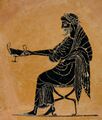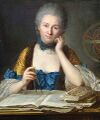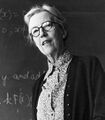Template:Selected anniversaries/December 17: Difference between revisions
No edit summary |
No edit summary |
||
| Line 8: | Line 8: | ||
File:Emilie Chatelet portrait by Latour.jpg|link=Émilie du Châtelet (nonfiction)|1706: Mathematician and physicist [[Émilie du Châtelet (nonfiction)|Émilie du Châtelet]] born. She will translate and comment upon on Isaac Newton's ''Principia Mathematica''. | File:Emilie Chatelet portrait by Latour.jpg|link=Émilie du Châtelet (nonfiction)|1706: Mathematician and physicist [[Émilie du Châtelet (nonfiction)|Émilie du Châtelet]] born. She will translate and comment upon on Isaac Newton's ''Principia Mathematica''. | ||
|| | ||1745: James Tytler born ... apothecary and the editor of the second edition of Encyclopædia Britannica. Tytler became the first person in Britain to fly by ascending in a hot air balloon (1784). Pic. | ||
|| | ||1778: Humphry Davy born ... chemist and physicist. | ||
|| | ||1787: Jan Evangelista Purkyně born ... anatomist and physiologist. In 1839, he coined the term 'protoplasm' for the fluid substance of a cell. He was one of the best known scientists of his time. Pic. | ||
||1797 | ||1790: Discovery of the Aztec calendar stone. | ||
||1797: Joseph Henry born ... physicist and engineer. | |||
||John Kerr FRS (b. 17 December 1824) was a Scottish physicist and a pioneer in the field of electro-optics. He is best known for the discovery of what is now called the Kerr effect. | ||John Kerr FRS (b. 17 December 1824) was a Scottish physicist and a pioneer in the field of electro-optics. He is best known for the discovery of what is now called the Kerr effect. | ||
Revision as of 10:08, 26 August 2018
498 BC: Dionysus gives speech which anticipates the coming of Saturnalia.
497 BC: The first Saturnalia festival celebrated in ancient Rome.
1706: Mathematician and physicist Émilie du Châtelet born. She will translate and comment upon on Isaac Newton's Principia Mathematica.
1842: Mathematician and academic Marius Sophus Lie born. He will largely create the theory of continuous symmetry and apply it to the study of geometry and differential equations.
1855: Set theorist and crime-fighter John Venn devotes himself to fighting crimes against mathematical constants.
1900: Mathematician and academic Mary Cartwright born. She will do pioneering work in what will later be called chaos theory.
1907: Lord Kelvin dies. He did much to unify the emerging discipline of physics in its modern form.
1938: Physicist Otto Hahn discovers the nuclear fission of the heavy element uranium, the scientific and technological basis of nuclear energy.
1963: Physicist and crime-fighter Nathan Rosen discovers a new form of Einstein–Rosen bridge which detects and prevents crimes against physical constants.








